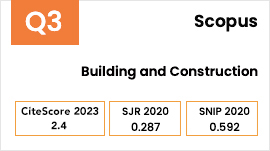2Transportation Vocational School, Eskişehir Technical University, Eskişehir, 26140, Türkiye
Abstract
New types of nuclear reactors have been proposed in recent years to meet the growing energy demand. These reactors operate at high outlet temperatures, which must be efficiently removed from the system. For this purpose, compact heat exchangers are considered important candidates. The study examines the thermohydraulic behavior of LiF-BeF2 (FLiBe) molten salt in a compact heat exchanger with multi-louvered fins as a part of a Molten Salt Reactor's cooling loop at the steady state. This numerical benchmark study aimed to collect data for both baseline scenarios and cases of slow coolant circulation within the reactor for the first time in the literature. Numerical tests were conducted for low Reynolds numbers ranging from 100 to 500, over a flow region characterized by varying fin pitches and louver angles to compare FLiBe's performance as a coolant in a Molten Salt Reactor. The findings indicate that as the louver angle increases, the molten salt flow becomes more directed through the louvers, enhancing heat transfer between the fins and the molten salt. Conversely, increasing fin pitches directs the flow more towards the ducts, reducing interaction with the FLiBe and diminishing thermal performance. As regard to outcomes, the highest heat transfer coefficient is determined to be about 27 kW/(m2K) at the smallest fin pitch of 1.5 mm, the biggest louver angle of 36o and a molten salt inlet velocity of 0.8 m/s. Under the same conditions, the heat transfer coefficient is calculated as 24.7 kW/(m2K) and 24.2 kW/(m2K) for the pitches of 2.0 mm and 2.5 mm, respectively. The louver angle has a significant effect on the pressure drop especially for the fin pitch of 1.50 mm. At 0.8 m/s molten salt inlet velocity and fin pitch of 1.5 mm, the pressure drop with a louver angle of 36o is 58% higher than with a louver angle of 20o.























